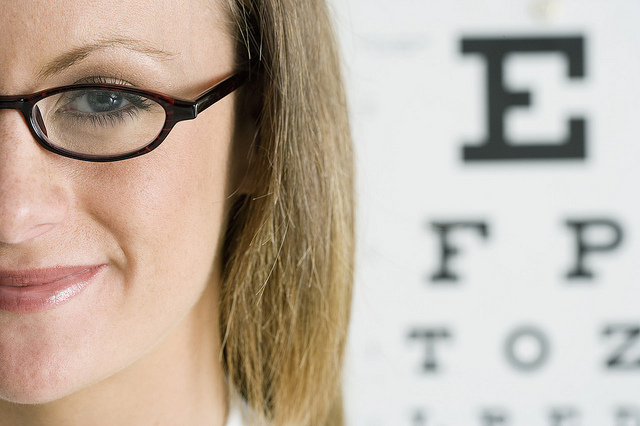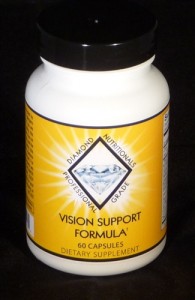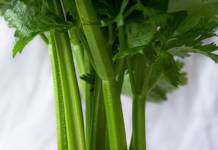According to the National Institute of Health, 80% of all impressions our brains receive are delivered by eyesight! Animals and humans alike depend on vision for survival. The entire visual system allows individuals to assimilate information from their surroundings. Without vision, your other senses become more isolated, and must work harder to comprehend every day experiences.
For those who are blessed with having good vision, It’s nearly impossible to understand the difficulty of living life without our most precious sense of eyesight. Knowing that your vision is so important, it is most certainly in your best interest to protect it and keep your eyes healthy. Changing certain aspects of your lifestyle to be healthier can have a dramatic impact on your overall eye health, and can work to protect your strong vision for many years to come.
How Eyesight Works
The human eye is a complex system, made up of several integral parts and pieces. By understanding how your vision actually works, it allows you to understand the importance of consuming the right nutrients needed for best eyesight!
Cornea
Built like a protective shield, the cornea is an outer layer which covers the front of your eye. As a clear layer covering the pupil, iris, and anterior chamber, the cornea not only protects your eye from dust, dirt, and debris; it also refracts or bends light coming into your eye, providing the ability to focus at any given moment.
Iris & Pupil
The colored part of your eye is called the iris, with the black center of your iris being your pupil. The iris is able to dilate (widen) or constrict (tighten), thus controlling the amount of light entering your eye through your pupil.
Crystalline Lens
Located directly behind the iris and pupil is your crystalline lens. Light is passed from the pupil through the lens, where light is now refracted and focused again… but this time onto the back of the eye. The interior of the lens is packed full of tiny “onion-like” concentric fibers. When the lens gets “cloudy” it is called a cataract.
Vitreous Body
The vitreous is a clear, thick gel which fills the space between the lens and the retina. Composed of mostly water, this transparent jelly-like substance helps to maintain the structural stability of the eye.
Conjunctiva
The conjunctiva is another thin protective layer which lines the outside of the eye, providing lubrication between the eye and inside of the eyelid. When the conjunctiva becomes infected by a virus or bacteria, it is called “pink eye” or conjunctivitis.
Sclera
The sclera is the “white of the eye.” This tough tissue serves as another protective layer (and structural component) which covers all of your eye, except for the cornea.
Choroid
The choroid is a thin, vascular layer located between the sclera and retina. Made almost entirely of blood vessels, the choroid nourishes the back of the eye; providing oxygen to the outer parts of the retina.
Macula
The macula is located near the back of your eye, and is responsible for detailed central vision. If you enjoy reading, then thank your macula! Without this small yet sensitive area near the center of your retina, your eye would be unable to give you clear, acute vision. Macular degeneration is a common diagnosis. There are two forms: “wet” and “dry.”
Retina
The retina is a thin layer of tissue which lines the inner surface of the back of the eye. Made up of cones and rods, the retina is responsible for producing an image and sending the representation to the brain via the optic nerve.
Optic Nerve
The optic nerve connects the eye with your brain. It’s the path which transmits all visual information.
What Factors Can Damage Your Eyesight?
Many people with above average eyesight take their own vision for granted! What they don’t think of is the fact that eyesight can lessen as you age, so it’s important to take good care of your eyes, providing nutrients to promote their health and protect good vision.
The following factors can damage your eyesight over time. You’ll want to avoid or protect your eyes from these factors as much as possible:
- Sunlight – UV light can especially do damage to your eyes, just as it can affect your skin.
- Smoking – as if there already weren’t enough reasons to quit smoking… smoking hurts your circulation, thus impairing vision over time and can sometimes lead to the development cataracts.
- High Blood Pressure – the tiny blood vessels in your eyes can become damaged with elevated blood pressure. Be sure to keep your blood pressure under good control.
- Diabetes – Uncontrolled diabetes is a major cause of eye disease. Be sure to keep your glucose under good control.
- Extended Computer Use – along the same lines as reading in dim light, extended computer use can cause unnecessary stress to your eyes. If staring at a computer screen all day is inevitable, look into investing in a “low blue light” LCD monitor.
Protect Your Eyes with Specific Antioxidants
Antioxidants provide necessary oxygen to the cells of your body, ridding you of toxins and promoting healthy functions within each of your body systems. Eyesight is no different! A healthy lifestyle promotes good vision, and is critical to extending the overall life of your eyes.
Anthocyanids
Found in many blue, purple, and red fruits and vegetables, these water-soluble antioxidant flavonoids can do wonders for your health. Aside from promoting good vision, anthocyanids also promote cardiovascular health by reducing the risk of heart disease. They also promote antiviral activity.
Eating plenty of these foods will provide your eyes with lots of beneficial anthocyanids:
- Blueberries
- Blackberries
- Eggplant
- Purple Cabbage
- Bilberry
- Beets
- Cherries
Carotenoids
As fat-soluble antioxidants, carotenoids can be found in many plant species, as well as some algae and fungi. Health scientists have discovered many health benefits, including optical enhancement of your visual system, antioxidant cleansing functions, and prenatal development. Specifically, lutein is known as the “eye vitamin,” being widely used to prevent eye diseases including macular degeneration, retinitis, and cataracts. Zeaxanthin is another important antioxidant carotenoid which is found in your retina but cannot be produced by the body. It is only obtained from your diet or supplementation.
Dark green, leafy vegetables, as well as some yellow and orange veggies, make for some of the best sources for eye-healthy carotenoids. These carotenoid-rich foods help to support the various tissues and structural components within your eye:
- kale
- spinach
- pumpkin
- brussel sprouts
- collard greens
- asparagus
- egg yolk
- carrots
- orange pepper
Astaxanthin
Another critical carotenoid that has been shown to promote eye health, and even prevent blindness, is astaxanthin. Astaxanthin is produced by a certain type of microalgae called Haematococcus pluvialis. This nutrient is naturally produced by the algae to protect it from damaging UV light.
Wild caught salmon is a fantastic source of astaxanthin, as well as beneficial omega-3 fats. The risk of macular degeneration can be reduced by a high intake of omega-3 fats. I recommend wild-caught Alaskan salmon by Vital Choice. These salmon are caught in cold, pure Alaskan waters and contain no synthetic chemicals.
Supplements for Healthy Eyes
Adding the right nutrient supplementation to your diet can help to improve your overall eye health, while also protecting your vision from degeneration. I recommend Diamond Nutritionals’ Vision Support Formula. This ophthalmologist formulated blend is perfect for supporting eyesight. Packed with antioxidants and nutrients such as ginkgo, querectin, bilberry, lutein, lycopene, and zeaxanthin, this formula has been used for many years by my patients and has successfully supported their vision.
Please be sure to keep up with your eye exams. How often depends on your age and medical conditions. Follow your doctor’s recommendation.
—
Photo credits:










